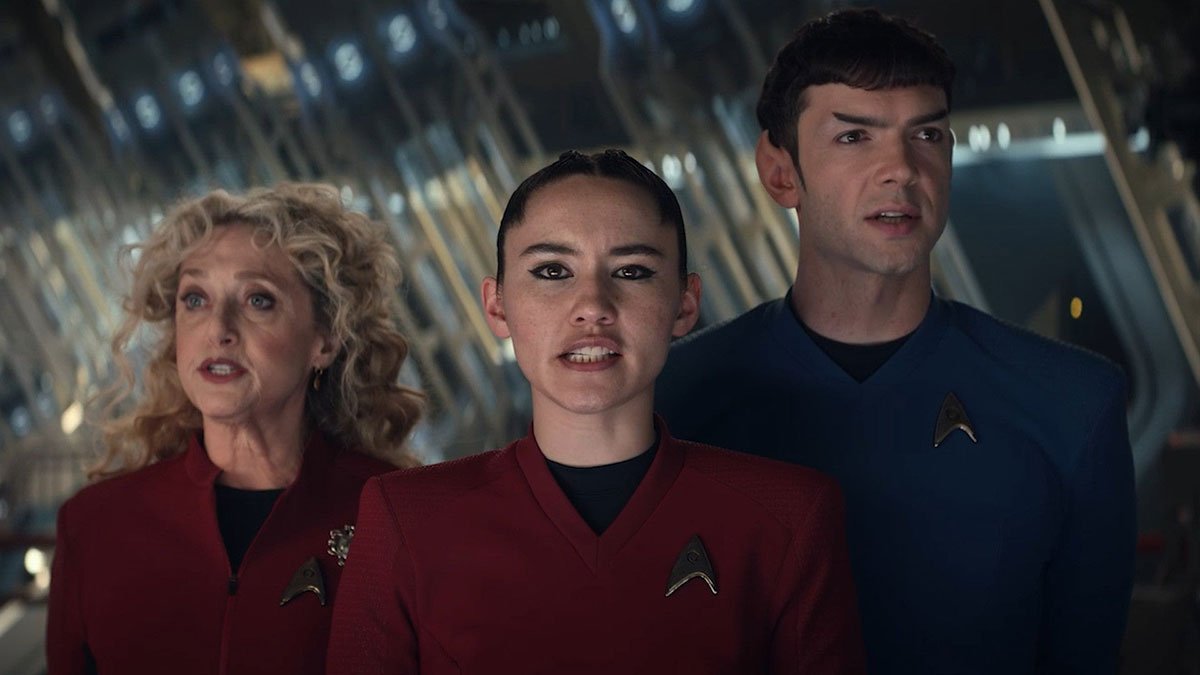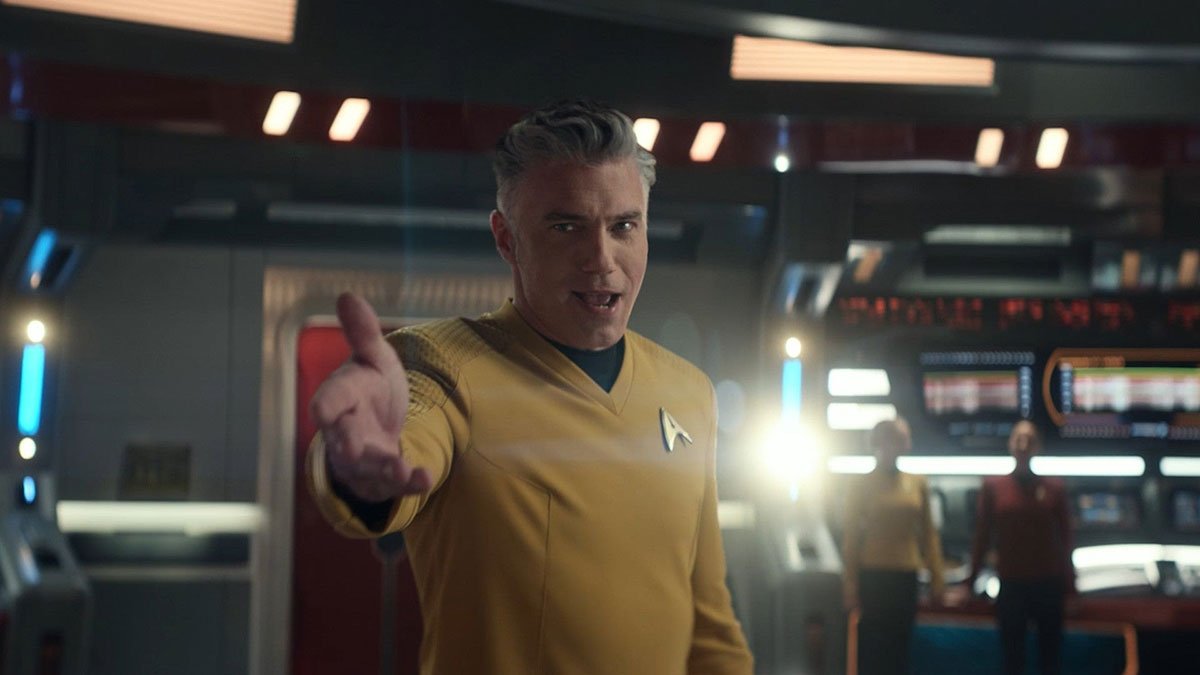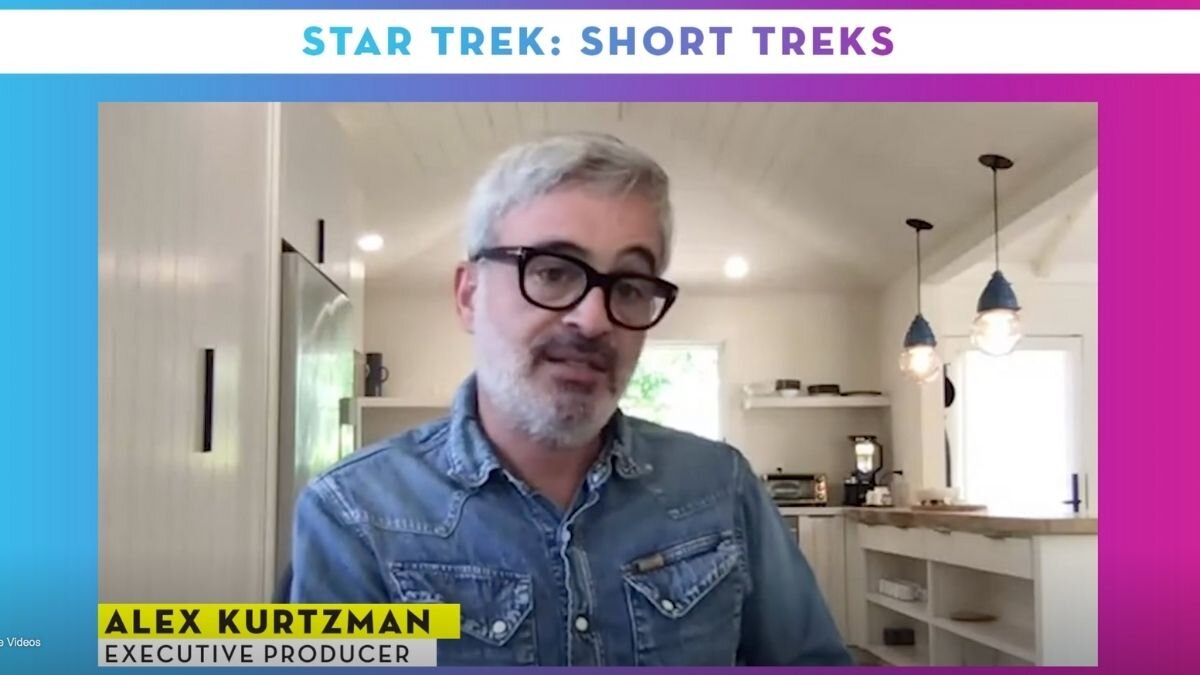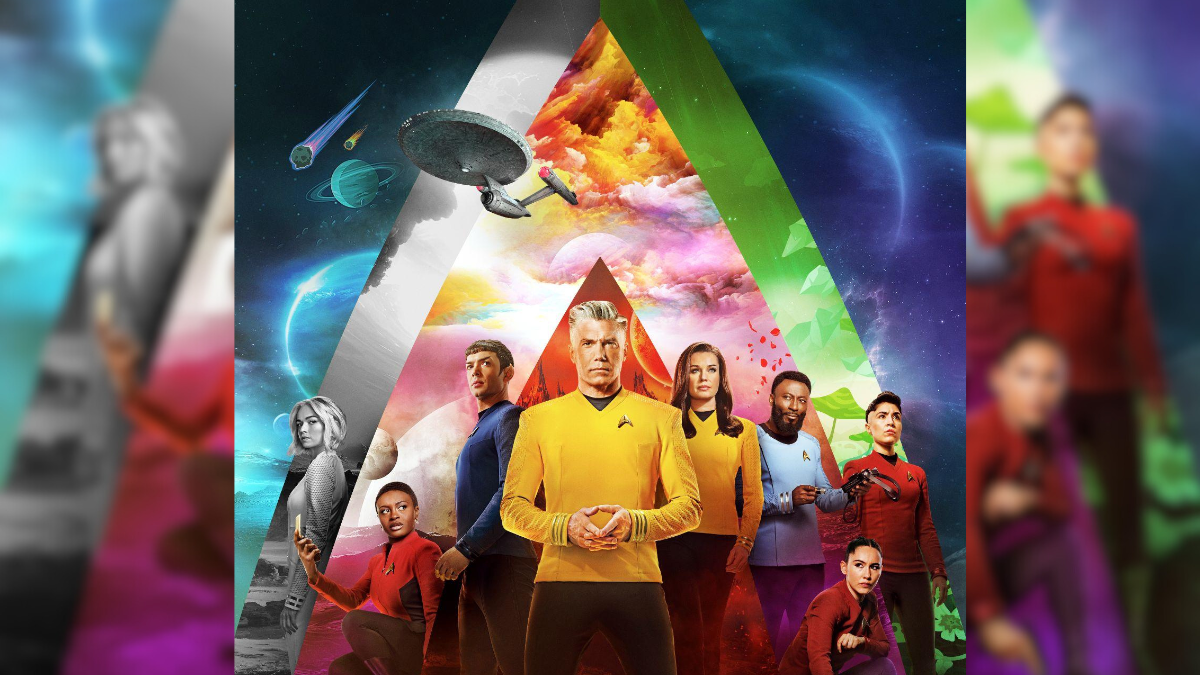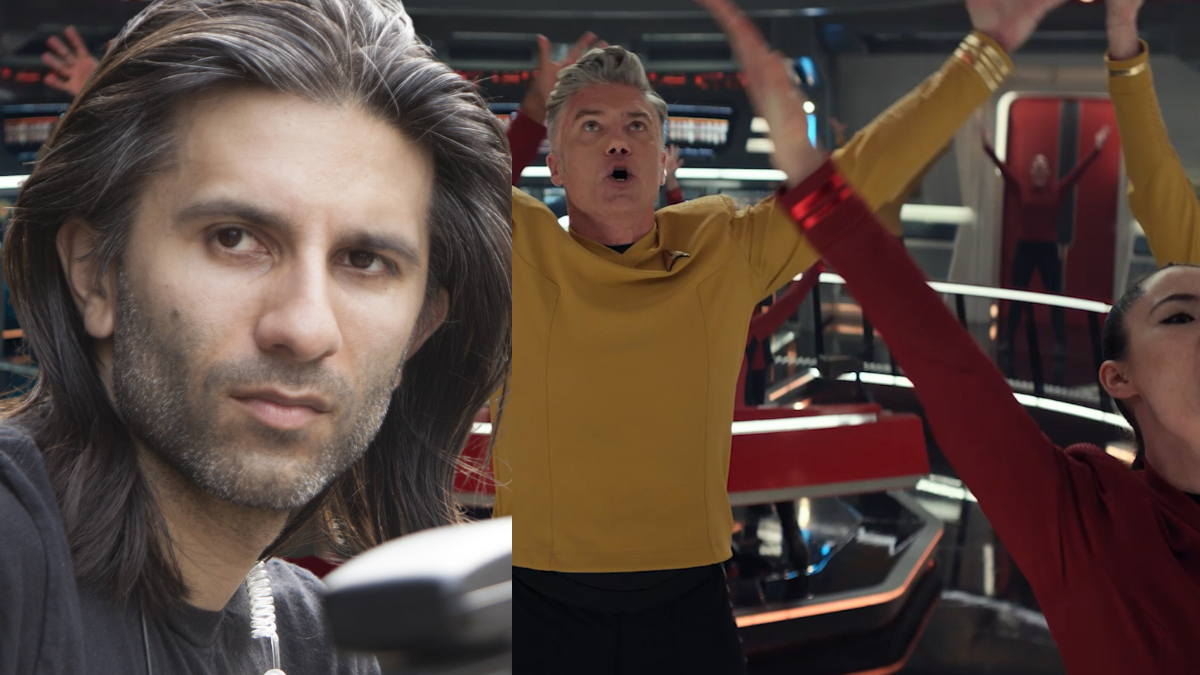How the Great American Songbook Inspired a 'Star Trek' Episode
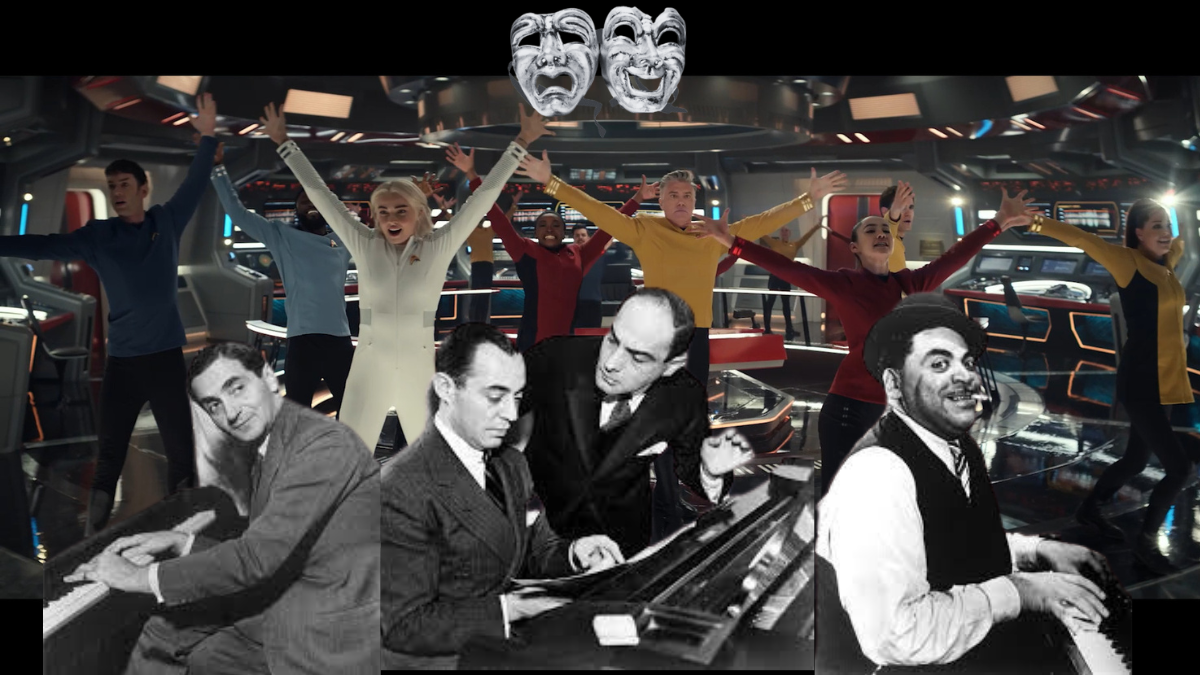
Irving Berlin, the Gershwins, and Fats Waller with the cast of STAR TREK: STRANGE NEW WORLDS. Images: Paramount+ / Public Domain.
This article contains spoilers for the Star Trek: Strange New Worlds episode “Subspace Rhapsody.”
AUGUST 3, 2023 - In the latest episode of Star Trek: Strange New Worlds, “Subspace Rhapsody,” the Enterprise is experiencing communication problems as Spock (Ethan Peck) uses the ship’s computer to analyze a rarely-encountered naturally-occurring subspace fold. So much power is going into his work that Uhura (Celia Rose Gooding) has to field all her crew mates’ communications requests manually.
However, the issues aren’t just technical, but interpersonal. Captain Pike (Anson Mount) is finding it difficult to tell his lady friend Captain Batel (Melanie Scrofano) that he has no interest in her desired destination for their upcoming romantic getaway; Nurse Chapel (Jess Bush) is hesitant to tell Spock that she is leaving the ship to pursue a fellowship opportunity; and, because of timey wimey laws, La’an (Christina Chong) can’t tell Lieutenant James Kirk (Paul Wesley) that they fell in love in another time and reality.
Pelia (Carol Kane), La’an (Christina Chong), and Spock (Ethan Peck) sing their feelings. Image: Paramount+.
Really, there’s only one logical way to resolve all these dilemmas: in song. The technobabble behind the episode makes less sense than usual if you think about it too long, but basically, Uhura sends a sample from The Great American Songbook into the subspace fold, which results in a quantum uncertainty field causing the crew, and eventually the Federation fleet and even the Klingons, to sing their feelings.
Talk about improbable!
But the “science” of the incident isn’t the point here. The cast and creative team behind “Subspace Rhapsody” simply wanted to make a fun, toe-tapping musical set in the Star Trek universe, and that’s exactly what transpired. It was a risk. If any one element of the episode (singing, choreography, writing, cinematography, direction) had been off, the episode would have proved to be one of Star Trek’s greatest duds.
Musical television episodes are nothing new. Shows like Buffy the Vampire Slayer, Psych, The Flash, Grey’s Anatomy, and One Life to Live are just a small sampling of shows with Broadway-inspired episodes, with results ranging from good to bad to just downright weird.
In my opinion, “Subspace Rhapsody” is among the best I’ve ever seen. The elements came together to create a truly unique entry into the franchise. Your mileage may vary, and this isn’t a review, so feel free to contact us to voice your opinion. We may publish some of your reviews.
We know the cast and crew kept their mouth shut about this special episode for a while, but it may surprise some people to find out just how long the silence lasted. “I’ve been holding my tongue since basically November 2021,” cinematographer Benji Bakshi told me.
That’s a long time to keep mum, but you know what Benjamin Franklin said: “Three can keep a secret if two of them are dead." “Of all the episodes, since it had never been done,” Bakshi continues, “it was very tight-lipped and I was a good little boy and didn’t tell anybody. I don’t think I told some of my closest friends or family because once anybody hears it’s very hard to contain it.”
Bakshi and I went on to discuss the making of the episode, including how his background in music and astrophysics helped to get him assigned to it.
Timeless Standards
In a way, The Great American Songbook inspired the episode. But what exactly is that?
Tin Pan Alley in 1910.
From about 1895 through the 1930s, West 28th Street between 5th and 6th Avenues in New York City was the hub of the popular music industry in the United States. Housing the most influential publishers and songwriters of the time, the area became known as Tin Pan Alley, possibly because the sound of all the upright pianos in the area sounded to one particularly unkind reviewer like the banging of tin pans in an alleyway,
The phrase “The Great American Songbook” came out of Tin Pan Alley, but it isn’t the name of any particular publication. Rather, it refers to the canon of the most important and influential songs of that approximately 50-year era. The list includes songs by Fats Waller (“Ain’t Misbehavin’), Richard Rodgers (“If I Loved You”), George Gershwin (“Embraceable You”), Irving Berlin (“White Christmas”), and, of course, Cole Porter (“Anything Goes”).
One Simple Rule
Cole Porter, composing. Image: Michael Ochs Archives/Getty Images.
And that’s how “Subspace Rhapsody” begins: with Uhura sending a recording of the title song of Cole Porter’s 1934 Broadway musical into the subspace fold. Had she decided to send Bach’s “Concerto for Two Violins in D minor” or Coolio’s “Gangsta’s Paradise” into the anomaly, things would have gone very differently.
Anything Goes was a madcap musical comedy vehicle for vocal powerhouse Ethel Merman, who belted her way to the title “the undisputed First Lady” of musical comedy. And while “Subspace Rhapsody” isn’t specifically a comedy, it does follow the rules of musical theater, one in particular.
Musicals aren’t for everybody. The most common complaint by people who don’t care for them is that people bursting into song simply isn’t realistic. But musicals are an art form and a well-written one doesn’t throw songs in willy-nilly.
So why do characters in musicals sing? Commander Chin-Riley (Rebecca Romijn) lays it out: “When their emotions are so heightened that words won’t suffice.” In a well-written musical, it’s emotion that brings the songs to the surface, which is the whole premise of “Subspace Rhapsody.”
Songs For All Occasions
Pike (Anson Mount) finally admits his feelings about a planned romantic vacation, in front of the bridge crew. Image: Paramount+.
The premise also allowed the writers to present common types of musical theater songs. The opening number, “Status Report,” “introduces” us to the characters and sets up the episode’s dilemma; La’an’s heartbreak results in her singing “How Would That Feel,” a strong example of an “I Want” song, fulfilling the same function as Ariel’s “Part of Your World” in Disney’s The Little Mermaid; in “I’m Ready,” Chapel uses a show-stopping dance number to break her news to Spock; and of course, there’s nothing like a rousing grand finale like “We Are One” to wrap up all the loose ends and send the audience out with a tap in their toe and a song in their heart.
Star Trek: The Musical
Star Trek does not inherently lend itself to the musical genre, yet in the past, there have been attempts to meld the two together. John M. Ford’s 1987 Trek novel How Much For Just the Planet? was an attempt to put the original series characters into a musical comedy, complete with fully realized song lyrics (but if there was ever music written for the songs, it was never recorded); and the delightful Khan!!! The Musical! recently had a successful run off-Broadway. It was only a matter of time before a musical episode was made canon.
Sure, it’s wacky and the science behind it doesn’t make a lick of sense. But following a heavy dramatic episode like last week’s “Under the Cloak of War,” an episode that was made simply to entertain might have been just what the doctor ordered!
Stay tuned to DSTN for a video interview with cinematographer Benji Bakshi on the making of “Subspace Rhapsody,” coming soon.
T is the Managing Editor for Daily Star Trek News and a contributing writer for Sherlock Holmes Magazine and a Shakespeare nerd. He may have been the last professional Stage Manager to work with Leonard Nimoy, has worked Off-Broadway and regionally, and is the union Stage Manager for Legacy Theatre, where he is currently working with Julie Andrews. after which he’ll be working on Richard III at Elm Shakespeare Company.

